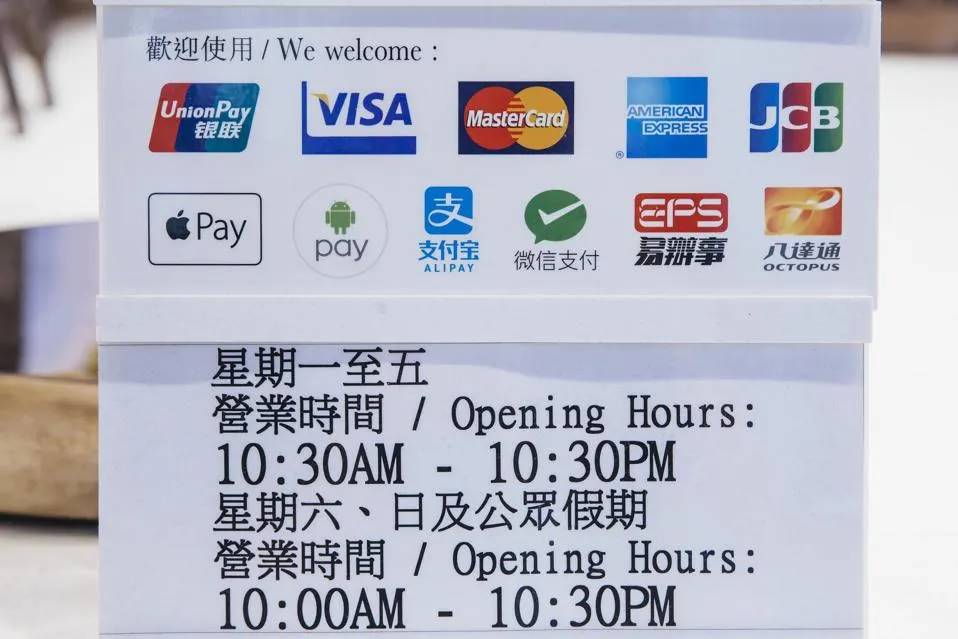Stablecoins provide an opportunity for a rapidly modernized financial service system and to change the leadership landscape of the industry.
Written by: Christian Catalini
Translated by: Deep Tide TechFlow

Stripe Inc., headquartered in South San Francisco, California, Tuesday, April 16, 2024.
Stripe recently acquired the stablecoin orchestration startup Bridge, which has caused a huge stir in the cryptocurrency world. This marks the first time a large payment company has invested over a billion dollars to advance this technology. While this is not Stripe's first foray into the cryptocurrency space, the timing feels particularly different. Currently, there is unprecedented enthusiasm in the market for stablecoins, and Bridge's co-founder Zach Abrams has successfully shaped the company into the "Stripe of the cryptocurrency world," attracting the attention of the Collison brothers.
Many may not have noticed that while Bridge is valued at $1.1 billion for Stripe, it may not have reached that valuation on its own. This is not due to a lack of capability within the team—Zach and his team have gathered a group of top engineers—but because profitability in the stablecoin space is extremely difficult. Whether it’s issuance, orchestration (i.e., converting between different stablecoins), or integration with traditional banking systems, achieving long-term profitability is a significant challenge.
So why is this the case? After all, Circle and Tether have made substantial profits in the past two years against the backdrop of rising interest rates, and with increasing market anticipation for Circle's public listing, it seems the market is ready for further growth and integration.
However, the reality is that the network effects in the stablecoin market may be far less powerful than expected, and it is not a "winner-takes-all" situation. In fact, stablecoins may simply be loss-leading products that could even become loss-making projects without the necessary supplementary assets. While industry insiders often believe that liquidity is the main reason only a few stablecoins can dominate, the truth is much more complex.
What are some common misconceptions about stablecoins? Let’s delve deeper.

CEO of Tether Holdings Ltd. Paolo Ardoino
Photographer: Nathan Laine/Bloomberg© 2023 Bloomberg Finance LP
1. Stablecoins need a supporting business model
When designing Libra, we realized that for stablecoins to succeed, they must rely on a supporting business model. The Libra ecosystem is built around a non-profit association that combines wallets, merchants, and digital platforms to support the issuance and payment network of stablecoins.
Relying solely on reserve interest to achieve profitability for stablecoins is not sustainable. We recognized this long ago when planning to issue stablecoins backed by low-interest (like euros) or even negative-interest (like yen) assets. Companies like Circle and Tether seem to overlook that the current high-interest environment is merely a temporary anomaly, and a sustainable business model cannot be built on such a potentially fleeting foundation.

Of course, stablecoins can profit not only through "stock" but also through "flow." Circle recently raised redemption fees, indicating they are beginning to recognize this. However, this practice contradicts a fundamental principle in the payments space: to earn user trust and loyalty, the flow of funds should be seamless. While exit fees may be acceptable in the gaming industry, such fees would undermine people's basic expectations of free movement of funds in mainstream payments. Therefore, transaction fees could become a potential source of revenue, but implementing these fees on the blockchain without strict control protocols is quite challenging. Even so, it is impossible to charge fees for transactions between users within the same wallet provider. These are scenarios we explored deeply in the Libra project, revealing the complexity and uncertainty of the non-profit association business model.
So how should stablecoin issuers choose? Unless they rely on temporary regulatory loopholes—unlikely to last long (which will be discussed in the next section)—they need to start competing with their own customers.
A recent series of moves by Circle, including the launch of programmable wallets, cross-chain protocols, and the Mint program, clearly shows the company's direction. But this is not good news for many of its closely related partners. This situation is not uncommon in platform strategies: never let partners intrude between you and your customers. However, many exchanges and payment companies have made the mistake of incorporating Circle into their ecosystems. To survive, Circle must transform into a payment company, even if it means encroaching on allies' markets. This model is not new—think of Amazon's relationship with third-party sellers, travel platforms with hotel chains, or Facebook with news publishers. When platforms succeed, they often absorb functionalities that originally relied on partners and monetize the effective parts. Developers in the Apple and Google ecosystems are all too familiar with this.
Stripe does not face such a dilemma. As one of the world's most successful payment companies, they have mastered how to build and profit from a streamlined software layer on top of global capital flows—this model scales efficiently through network effects without relying on country-specific banking licenses. Stablecoins accelerate this process by bridging Stripe with domestic banks and payment networks, allowing networks previously constrained by traditional institutions (like card companies) to overcome last-mile issues, providing greater value to merchants and consumers.
This is why PayPal launched its own stablecoin, and other fintech giants like Revolut and Robinhood are following suit. Unlike before, they are beginning to compete on open protocols but can enhance their core businesses by adjusting their stablecoin strategies. In doing so, they will make stablecoins extremely cheap and convenient for consumers and businesses.

On Tuesday, September 26, 2023, Argentine peso banknotes worth $1,000 are sorted in Buenos Aires, Argentina
© 2023 Bloomberg Finance LP
2. Dollarization is not a product
The cryptocurrency space has severely underestimated the impact of regulation on its future. We experienced this when we released the first version of the Libra white paper, which led to two years of difficult regulatory dialogue to ensure the project met the expectations of policymakers and regulators.
Today's stablecoins face the same situation. Many believe that stablecoins can seamlessly provide consumers and businesses with low-cost global dollar accounts. After all, in times of crisis, people around the world want to hold dollars in a "too big to fail" American financial institution. Additionally, some may think the U.S. government would support this trend, as it helps solidify the dollar's status as the global reserve currency.
However, the reality is much more complex. While the U.S. would face significant losses if it lost its financial and sanctions infrastructure as the global standard—especially if the dollar's "excess privilege" were weakened like previous reserve currencies—the U.S. Treasury is unlikely to consistently support accelerated dollarization. In fact, its Office of International Affairs may view this as a significant challenge to diplomacy and global financial stability.
Countries that value monetary policy independence, fear capital flight during crises, and are concerned about domestic bank stability will strongly oppose the widespread adoption of frictionless dollar stablecoin accounts. They will use every means to prevent or limit these accounts, just as they resist other forms of dollarization. While a complete ban on crypto trading may not be realistic, as shown by the development of the internet, governments still have various ways to restrict access and suppress its mainstream application.
Does this mean that stablecoins will face difficulties in emerging economies with capital controls or concerns about capital flight? Not necessarily—there is an inevitable trend toward the rise of domestic stablecoins that follow local banking and regulatory frameworks. Although the dollar has historically dominated the stablecoin market, the situation may change rapidly. In Europe, with the implementation of the Markets in Crypto-Assets (MiCA) regulation, banks, fintech companies, and emerging enterprises are racing to issue euro-denominated stablecoins. This strategy helps maintain the stability of local banking systems and will become increasingly important in regions like Latin America, Africa, and Asia.
Clear regulations also enable banks to compete in a fair environment, which has not yet been realized in the U.S. In addition to issuing fully backed stablecoins, banks can also issue deposit tokens to increase revenue through money creation. This places pure stablecoin issuers without banking licenses, discount windows, or government deposit insurance at a significant competitive disadvantage.

In Hong Kong, various payment service icons are displayed
Photographer: Anthony … [+]© 2016 Bloomberg Finance LP
3. There will not be a single stablecoin winner
Indeed, issuers can build network effects around the global liquidity and availability of their stablecoins, but as decentralized exchange (DEX) protocols know, liquidity is easy to gain and easy to lose. Similarly, the scale effects of branding and marketing may help issuers capture market share, but this does not always translate into a truly sustainable competitive advantage.
The reality is that the core feature of stablecoins—anchoring to currencies like the dollar or euro—is also their greatest weakness. Currently, these assets are viewed as independent entities, but once regulations standardize and ensure that all stablecoins are equally safe, individuals and businesses will regard them as ordinary dollars or euros. While there are indeed legal distinctions—evident in the Silicon Valley Bank run—most people do not care whether their dollars are held in a U.S. bank or JPMorgan. This is the magic of the dollar as a currency, all backed by the Federal Reserve.
Stablecoins will undergo a similar process. Although there may be dozens of stablecoins in each major market, users will overlook this complexity. Once this happens, the economics of stablecoins will favor companies with complementary business models or those that control the interface between stablecoins and their supporting assets (such as bank deposits, U.S. Treasury bonds, or money market funds).
This is bad news for pure stablecoin issuers like Circle, as their banking system interfaces rely on companies like BlackRock and BNY Mellon. These financial giants could become direct competitors. For example, BlackRock is already operating the world's largest tokenized U.S. Treasury and repo fund (BUIDL).
A common misconception in the history of technological disruption is that existing companies often successfully fend off challenges. Even the classic case of disruptive innovation mentioned by Clayton Christensen—the rise of small disk drive manufacturers in the hard drive industry—is not entirely accurate: Seagate not only survived the disruption but remains the largest manufacturer in the world today. In highly regulated industries like financial services, new entrants face even greater challenges.

Tech companies with banking licenses, such as Revolut, Monzo, and Nubank, have already secured advantageous positions in the market, and other companies may accelerate their licensing efforts to gain similar advantages. However, many participants in the stablecoin market will struggle to compete with traditional banks and may face the risk of being acquired or failing. Banks and credit card companies will resist a market dominated by a few stablecoins, preferring to support a market structure composed of multiple interoperable and interchangeable issuers. When this occurs, liquidity and availability will be driven by existing consumer and merchant distribution channels, which is precisely the advantage that new banks and payment companies like Stripe and Adyen possess.
Fully backed stablecoins like USDC and USDT need to find high-frequency use cases, such as cross-border capital flows, to maintain their market position or attract a decentralized finance (DeFi) ecosystem that can introduce transparent tokenization to support their narrow banking model. Meanwhile, deposit tokens or tokenized funds issued by banks will see broader adoption due to their stronger economic foundations, especially at the consumer and institutional levels. Institutional users are particularly accustomed to managing diversified assets, such as money market funds, and are very concerned about the opportunity cost of their capital. In this area, competition for stablecoin yield sharing has already begun.
In every region, whether banks or cryptocurrency companies, there will be efforts to become the key gateway to local markets. However, they need to seriously consider how stablecoins can lower the barriers for foreign competitors to enter the market by connecting local payment systems with blockchain networks. After all, from a business perspective, the core change is that these systems will operate on open protocols.

General Manager of the Bank for International Settlements Agustin Carstens
Vernon photographed… [+] Yuen/NurPhoto from Getty Images
So what does all this mean?
For leading payment companies, fintech firms, and emerging banks, the outlook is bright. They can leverage stablecoins to streamline operations and accelerate global expansion. This also creates new opportunities for domestic stablecoin issuers, allowing them to elevate their status and prepare for the global interoperability of payment systems—in this area, stablecoins are expected to succeed, while the Bank for International Settlements' vision of a "financial internet" may struggle to materialize.
Leading cryptocurrency exchanges will also leverage stablecoins to more actively enter the consumer and merchant payment space, becoming strong competitors to major fintech and payment companies.
Despite ongoing questions about how stablecoins will expand anti-money laundering and compliance controls during their adoption process, there is no doubt that they provide an opportunity for a rapidly modernized financial service system and to change the leadership landscape of the industry.
免责声明:本文章仅代表作者个人观点,不代表本平台的立场和观点。本文章仅供信息分享,不构成对任何人的任何投资建议。用户与作者之间的任何争议,与本平台无关。如网页中刊载的文章或图片涉及侵权,请提供相关的权利证明和身份证明发送邮件到support@aicoin.com,本平台相关工作人员将会进行核查。




